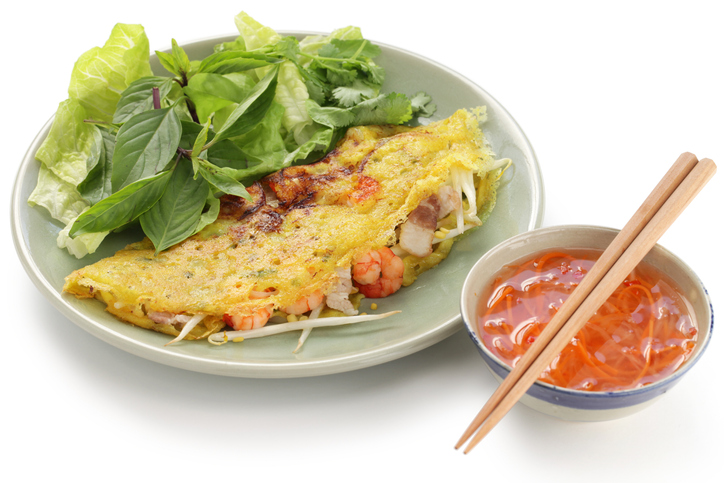Vietnam is culturally rich and ecologically diverse, full of delicious food options, friendly people, and beautiful landscapes that range from the stunning stepped rice terraces in the fertile central plains to the mountains in the north adorned by a crown of mist. Vietnam is also very affordable, and a good length Karambol Vietnam itinerary of around 2-3 weeks won’t break the bank. We can help you plan your itinerary for Vietnam on a budget. Vietnam is also quite expansive, ranging from north to south, with plenty to do and see in all regions. With so many options to explore, it’s worth putting in some research into making the perfect Vietnam itinerary for your trip.
Here are some tips on how to visit Vietnam on a budget
1. Work Out a Budget
Vietnam is relatively easy to travel with even the lightest of budgets, with plenty of affordable streets food options and a good range of budget accommodation options such as hostels and homestays.
It is possible to travel on as little as $20 per day, although you’ll be getting a very barebones experience. A realistic budget is between $50-80 per day. This will give you enough to travel comfortably, experience a great range of food, and visit a few paid sights or attractions each day.

Dong (VND) is the Vietnamese currency used throughout the country. Here are some rough costs (in USD) of things in Vietnam to help you prepare a budget.
- Hanoi to Ho Chi Minh bus: $43
- 20-minute taxi across town: $5-8
- Meal at a restaurant: $5
- Street food: 20 cents to $1
- A bottle of local beer: 90 cents
- Admission to a museum: $3-4
- Average hostel room per night: $5-7
- 3-star hotel per night: $15-18
2. Getting to Vietnam
Most will arrive in Vietnam by air in one of the three major international airports: Noi Bai International Airport (HAN) in Hanoi, Tan Son Nhat International Airport (SGN) in Ho Chi Minh City, and Da Nang International Airport (DAD) in Da Nang.
Arriving in Vietnam by land borders is also straightforward. Overnight sleeper trains run regularly between Beijing (China) and Hanoi connecting the North. There are also frequent train connections between Nanning (China) and Hanoi. International buses also connect to Hanoi and Ho Chi Minh and tickets are inexpensive.
Another scenic way to get to Vietnam if you have plenty of time is to arrive by boat from Cambodia. With a few connections over a couple of nights, it’s a pleasant trip starting from Phnom Penh, overnighting in Can Tho where you can visit the Cai Rang Floating Market, then follow the Mekong River to Ho Chi Minh City. This route is highly recommended!
3. Getting Around Vietnam
Motorbikes are the vehicle of choice in Vietnam, and you’ll find motorbikes swarming around everywhere from the bustling cities through to the quaint countryside. Scooters can be hired for around US$10 per day and are perfect for getting around town or zipping out to see a nearby sight or attraction.
If you’re looking to do some serious touring around Vietnam on a motorbike, there are specialized agencies in most major cities of Vietnam where you can hire touring bikes fully kitted up for your adventure.
If you’re a little nervous about hiring a motorbike (hey, the traffic is nuts in some cities), then taking a bus is another great option for getting around Vietnam. Private bus companies offer well-appointed air-conditioned coaches that pass through most parts of Vietnam and they are very inexpensive.
4. Accommodation in Vietnam
Accommodation is both cheap and plentiful in Vietnam and offers everything from budget dorms, well-priced 3-star hotels, to the fanciest of luxury hotels. Basic hostel rooms start from around $10 per night and depending on when you go (low season is far cheaper and easier), it’s possible to roll from one town to the next and find accommodation without the need for a reservation.
If you’re someone who likes to plan your accommodation, then keep an eye out for deals and book well in advance to get the best deals. Websites such as Hostelworld, Booking.com, Expedia, and Airbnb are good places to start.
Another excellent budget accommodation option that also helps local communities is lodging in a homestay. There are numerous homestay opportunities in almost every town and city in Vietnam, and it is a fascinating opportunity to get a glimpse into the culture and everyday lives of the Vietnamese.
Homestays often also include full or half-board, so you’ll also experience traditional Vietnamese food along with friendly hospitality and a comfy bed.
5. Vietnamese Food
Many will want to plan their itinerary around the food alone, as so many delicious dishes are an absolute must to sample! Whether your appetite is craving for a warm and hearty pho soup or the freshness and delicate balance of flavors from Vietnamese rice spring rolls, Vietnamese cuisine has something to please everyone.
The best way to experience cheap and authentic Vietnamese food is by hitting the streets. There you’ll be greeted by smiling vendors tending their carts of cooked and carefully prepared foods. Many street foods will be made with a base of rice and be ‘packaged’ in banana leaf, hiding a delicious surprise, either with rice, vegetables, or meat.

Vietnamese grills send a blue haze of smoke throughout the busy streets and follow your nose to find a variety of inexpensive and delicious grilled specialties. From pork skewers with a satay marinade, or grilled chicken with a spicy chili and soy sauce, not to mention a range of grilled seafood and vegetable options too.
6. Phones; Internet
Free WiFi is available almost everywhere in the larger cities, although it is a little harder to come by in the more remote rural areas. Your best bet to stay connected is to buy a Vietnamese SIM card as soon as you arrive.
There are plenty of different carrier companies offering a wide range of deals from small data packages for around $5 up to unlimited data plans for around $40.
7. Free/Low-Cost Things to Do in Vietnam
There are plenty of things to do in any region of Vietnam and not only are most options very affordable, but many are also totally free! Tour around Ho Chi Minh or Hanoi on foot and take time to be immersed in the rich cultural tapestry that is uniquely Vietnamese.
Within cities and small towns, authentic street food carts line the streets and are inexpensive and a great way to sample some local cuisine. After a day of touring, pop into a local ‘bia hoi’ (literally fresh beer) and enjoy some people-watching perched on the street corner as the sun sets over the city.

If you’re looking for a more relaxed vibe, then head straight for any of the rural areas of Vietnam such as Sapa. From there, take a hike or hire a bicycle and tour the province and you’ll be rewarded with spectacular scenery, highland tribes, iconic rice paddies, and forest hikes.
It’s well worth visiting the rural areas for a few days, and accommodation options and homestays are a great way to experience the authentic and warm hospitality of the Vietnamese people. And you get to travel to Vietnam on a budget too.
To Summarize the Perfect Vietnam Trip
With a flight time of around 18 hours from any US city to Vietnam and so many things to see and do once you’re there, it’s logical to make your Vietnam itinerary at least 2 weeks. Ideally, 3-4 weeks will give you that little bit more time and afford a more relaxed and enjoyable traveling experience.
Allow at least 2-3 days in Hanoi and Ho Chi Minh, and popular rural regions such as Saba also really deserve at least 2-3 nights so you can explore, hike, and trek amongst the beautiful scenery. Also, bank on a few days of recovery as Vietnam is a great place to let your hair down on any of the popular beaches or city bars.


